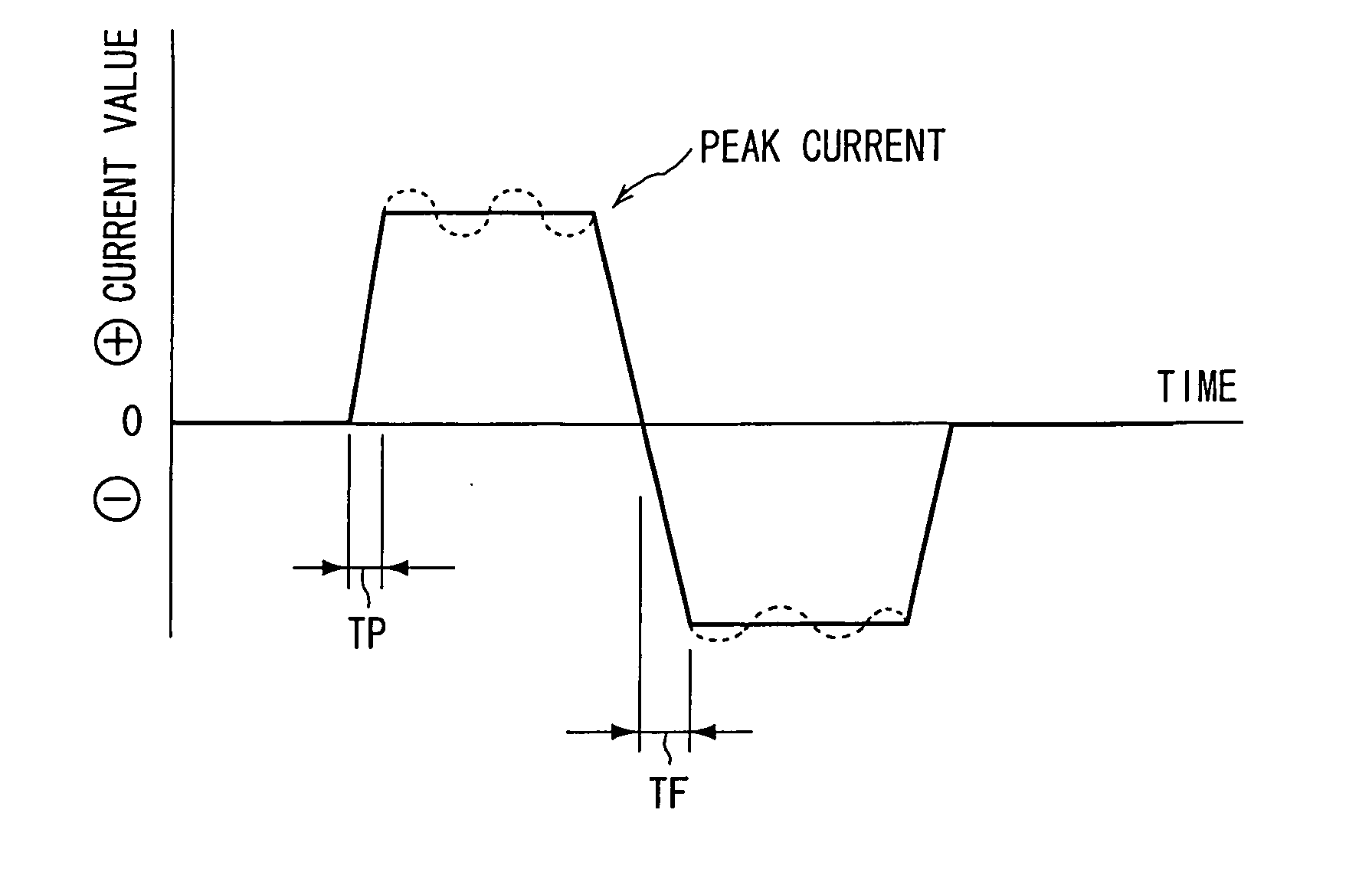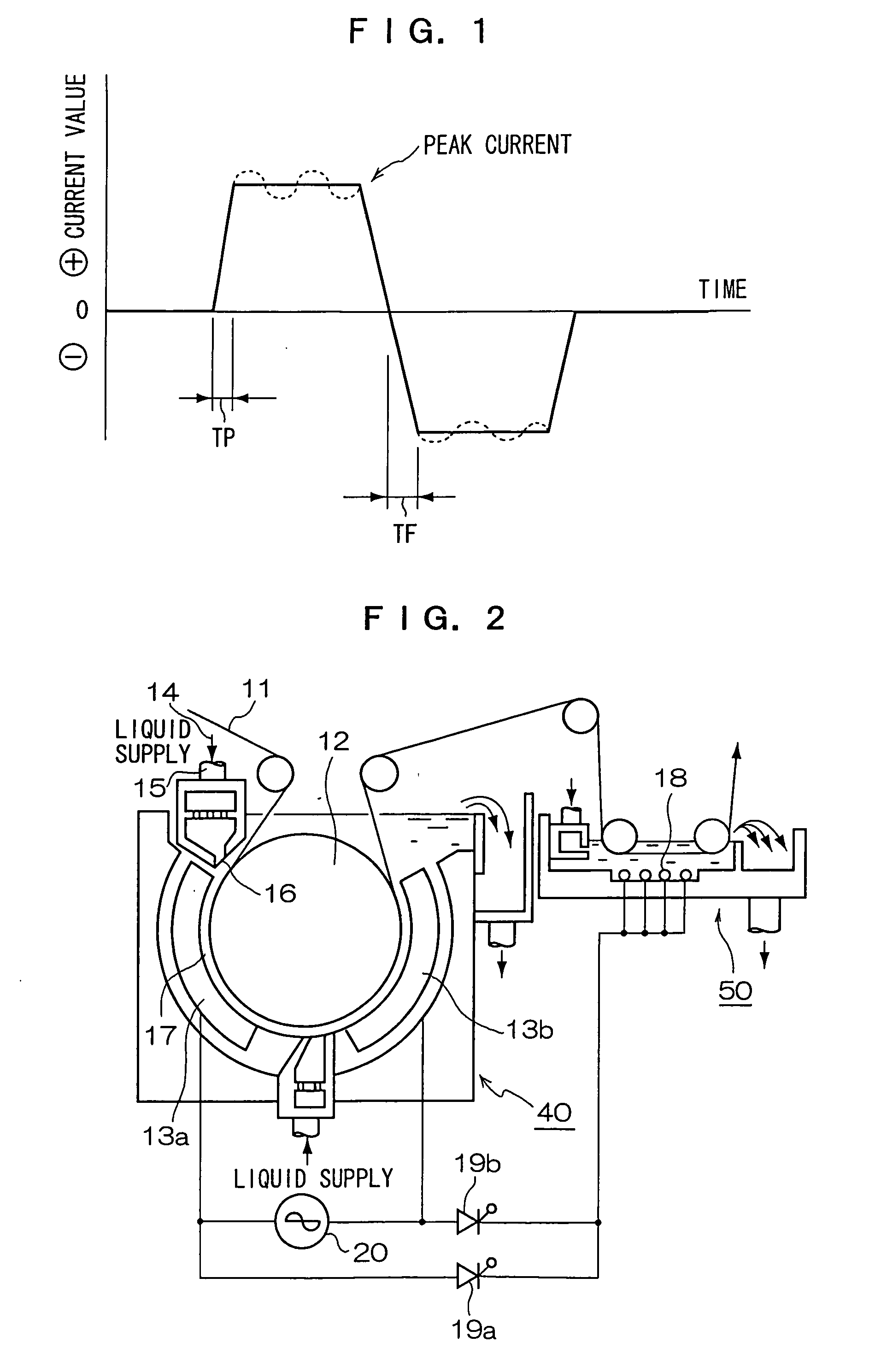Planographic printing plate precursor
- Summary
- Abstract
- Description
- Claims
- Application Information
AI Technical Summary
Benefits of technology
Problems solved by technology
Method used
Image
Examples
examples
[0255] The invention will be explained by way of examples, which, however, do not limit the scope of the invention.
examples 1 to 3
(Production of a Substrate)
[0256] An aluminum alloy having the following composition was used to prepare a molten bath: Si: 0.06 mass %, Fe: 0.30 mass %, Cu: 0.014 mass %, Mn: 0.001 mass %, Mg: 0.001 mass %, Zn: 0.001 mass % and Ti: 0.03 mass %, wherein the balance was Al and unavoidable impurities. The molten bath was subjected to molten bath treatment and filtered to produce an ingot having a thickness of 500 mm and a width of 1200 mm by a Direct Chill (DC) casting method. The surface of the ingot was scalped using a scalping machine to an average thickness of 10 mm. The ingot was then kept at 550° C. by heating it uniformly for about 5 hours and then, when the temperature was lowered to 400° C., the ingot was made into a rolled plate 2.7 mm in thickness by using a hot rolling mill. The rolled plate was further heat-treated at 500° C. by using a continuous annealing machine and then, cold-rolled to produce a finished 0.24-mm-thick aluminum plate. This aluminum plate was cut into...
examples 4 to 6
[0272] Planographic printing plate precursors 4 to 6 were obtained in the same manner as in Example 1, except that the lower recording layer coating solution was altered.
N-(4-(Amount described in Table 2,aminosulfonylphenyl)methacrylamide / D g)acrylonitrile / methylmethacrylate(36 / 34 / 30, weight average molecularweight: 100000, acid value: 2.65)PD-1 (following structure)(Amount described in Table 2,E g)Dye C (following structure)0.109 g4,4′-Bishydroxyphenylsulfone0.126 gTetrahydrophthalic acid anhydride0.190 gp-Toluenesulfonic acid(Amount described in Table 2,F g)3-Methoxy-4-0.030 gdiazodiphenylamine hexafluorophosphateCompound obtained by 0.10 gchanging the counter ion of Ethyl Violetto 6-hydroxynaphthalenesulfoneMethyl ethyl ketone25.36 g1-Methoxy-2-Propanol 13.0 gγ-butyrolactone 13.2 g
[0273]
TABLE 2Example 4Example 5Example 6C (g)1.9201.701.82D (g)0.1920.430.32E (g)0.1200.1230.130Dye CPD-1
PUM
| Property | Measurement | Unit |
|---|---|---|
| Size | aaaaa | aaaaa |
| Size | aaaaa | aaaaa |
| Mass | aaaaa | aaaaa |
Abstract
Description
Claims
Application Information
 Login to View More
Login to View More - R&D
- Intellectual Property
- Life Sciences
- Materials
- Tech Scout
- Unparalleled Data Quality
- Higher Quality Content
- 60% Fewer Hallucinations
Browse by: Latest US Patents, China's latest patents, Technical Efficacy Thesaurus, Application Domain, Technology Topic, Popular Technical Reports.
© 2025 PatSnap. All rights reserved.Legal|Privacy policy|Modern Slavery Act Transparency Statement|Sitemap|About US| Contact US: help@patsnap.com



